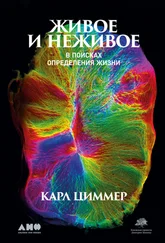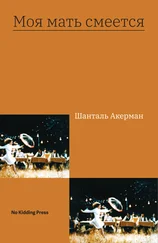ФКУ(фенилкетонурия) – рецессивное наследственное заболевание, возникающее из-за неработающего фермента.
Хромосома – нитевидная структура, состоящая из ДНК и белков. У человека 23 пары хромосом.
Экспрессия генов – производство белков или функциональных РНК на основе информации, закодированной в гене.
Эндосимбионт – микроорганизм, который может существовать только внутри хозяина и должен передаваться потомкам от матери [1180] Некоторые организмы, например вестиментиферы, приобретают своих эндосимбионтов из внешней среды (см.: Andrea D. Nussbaumer, Charles R. Fisher, Monika Bright. Horizontal endosymbiont transmission in hydrothermal vent tubeworms // Nature, 2006. V. 441. P. 345–348). Некоторые эндосимбиотические бактерии могут существовать и вне тела хозяина. Эндосимбионты встречаются и у ряда одноклеточных. – Прим. науч. ред.
.
Эпигеном – метильные группы и другие молекулы, изменяющие активность (влияющие на экспрессию) генов, но не меняющие последовательность ДНК.
Эукариоты – организмы, возникшие примерно 1,8 млрд лет назад и характеризующиеся наличием ядра в клетке. К ним относятся животные, растения, грибы и протисты.
Ядро – органелла в клетках человека и других эукариот, содержащая хромосомы.
ABC News. 2016. “She’s Her Own Twin.” August 15. http://abcnews.go.com/Primetime/shes-twin/story?id=2315693(accessed October 28, 2016).
Abyzov, Alexej, Jessica Mariani, Dean Palejev, Ying Zhang, Michael Seamus Haney, Livia Tomasini, Anthony F. Ferrandino, and others. 2012. “Somatic Copy Number Mosaicism in Human Skin Revealed by Induced Pluripotent Stem Cells.” Nature 492: 438–42.
Academic Family Tree. FlyTree – The Academic Genealogy of Drosophila Genetics, https://academictree.org/flytree/(accessed May 10, 2017).
Ackerman, Michael J. 2015. “Genetic Purgatory and the Cardiac Channelopathies: Exposing the Variants of Uncertain/unknown Significance Issue.” Heart Rhythm: The Official Journal of the Heart Rhythm Society 12: 2325–31.
Ackroyd, Peter. 2014. Charlie Chaplin: A Brief Life. New York: Doubleday.
Adam, Rene C., and Elaine Fuchs. “The Yin and Yang of Chromatin Dynamics in Stem Cell Fate Selection.” Trends in Genetics 32: 89–100.
Adami, Christoph. 2015. “Information-Theoretic Considerations Concerning the Origin of Life.” Origins of Life and Evolution of Biospheres 45: 309–17.
Adams, Mark В., ed. 2014. The Evolution of Theodosius Dobzhansky: Essays on His Life and Thought in Russia and America. Princeton: Princeton University Press.
Adashi, Eli Y., and I. Glenn Cohen. 2017 “Mitochondrial Replacement Therapy: Unmade in the USA.” JAMA 317: 574–75.
Adelson, Betty M. 2005. The Lives of Dwarfs: Their Journey from Public Curiosity Toward Social Liberation. New Brunswick, NJ: Rutgers University Press.
Adrio, Jose L., and Arnold L. Demain. 2006. “Genetic Improvement of Processes Yielding Microbial Products.” FEMS Microbiology Reviews 30: 187–214.
Agius, E. 1990. “Germ-line Cells – Our Responsibilities for Future Generations.” In Our Responsibilities towards Future Generations. Edited by S. Busuttill and others. Valletta, Malta: Foundation for International Studies.
Akbari, Omar S., Hugo J. Bellen, Ethan Bier, Simon L. Bullock, Austin Burt, George M. Church, Kevin R. Cook, and others. 2015. “Safeguarding Gene Drive Experiments in the Laboratory.” Science 349: 972–79.
Alem, Sylvain, Clint J. Perry, Xingfu Zhu, Olli J. Loukola, Thomas Ingraham, Eirik Søvik, and Lars Chittka. 2016. “Associative Mechanisms Allow for Social Learning and Cultural Transmission of String Pulling in an Insect.” PLOS Biology 14: e100256.
Allen, Elizabeth Cooper. 1983. Mother, Can You Hear Me?: The Extraordinary True Story of an Adopted Daughter’s Reunion with Her Birth Mother After a Separation of Fifty Years. New York: Dodd, Mead.
Allen, Garland E. 2003. “Mendel and Modern Genetics: The Legacy for Today.” Endeavour 27: 63–68.
________. 2011. “Eugenics and Modern Biology: Critiques of Eugenics, 1910–1945.” Annals of Human Genetics 75: 314–25.
Allen, Jenny, Mason Weinrich, Will Hoppitt, and Luke Rendell. 2013. “Network-based Diffusion Analysis Reveals Cultural Transmission of Lobtail Feeding in Humpback Whales.” Science 340: 485–88.
Allis, C. David, and Thomas Jenuwein. 2016. “The Molecular Hallmarks of Epigenetic Control.” Nature Reviews Genetics 17: 487.
________, Marie-Laure Caparros, Thomas Jenuwein, and Danny Reinberg. 2015. Epigenetics. Cold Spring Harbor, NY: Cold Spring Harbor Laboratory Press.
Álvarez, Gonzalo, Francisco C. Ceballos, and Celsa Quinteiro. 2009. “The Role of Inbreeding in the Extinction of a European Royal Dynasty.” PLOS One 4: e5174.
________, Francisco C. Ceballos, and Tim M. Berra. 2015. “Darwin Was Right: Inbreeding Depression on Male Fertility in the Darwin Family.” Biological Journal of the Linnean Society 114: 474–83.
American Association for the Advancement of the Sciences. 1997. “Guidelines for Human Germ-Line Interventions Topic of AAAS Forum.” September 12. https://www.eurekalert.org/pub_releases/1997–09/AAft-GFHG-120997.php(accessed March 28, 2017).
Amundson, Ronald. 2007. The Changing Role of the Embryo in Evolutionary Thought: Roots of Evo-devo. New York: Cambridge University Press.
Anacker, Christoph, and René Hen. 2017. “Adult Hippocampal Neurogenesis and Cognitive Flexibility – Linking Memory and Mood.” Nature Reviews Neuroscience. doi: 10.1038/nrn.2017.45.
Anderson, D., Rupert E. Billingham, G. H. Lampkin, and Peter Brian Medawar. 1951. “The Use of Skin Grafting to Distinguish Between Monozygotic and Dizygotic Twins in Cattle.” Heredity 5: 379–97.
Andersson, Claes. 2013. “Fidelity and the Emergence of Stable and Cumulative Sociotechnical Systems.” PaleoAnthropology 2013: 88–103.
Aplin, Lucy M., Ben C. Sheldon, and Julie Morand-Ferron. 2013. “Milk Bottles Revisited: Social Learning and Individual Variation in the Blue Tit, Cyanistes Caeruleus.” Animal Behaviour 85: 1225–32.
Arcabascio, Catherine. 2007. “Chimeras: Double the DNA – Double the Fun for Crime Scene Investigators, Prosecutors, and Defense Attorneys.” Akron Law Review 40: 435.
Archibald, John M. 2015. “Endosymbiosis and Eukaryotic Cell Evolution.” Current Biology 25: R911–21.
Aristotle. The History of Animals. Translated by DArcy Wentworth Thompson. MIT Internet Classics Archive. http://classics.mit.edU/Aristotle/history_anim.6.vi.html(accessed October 2, 2017).
Читать дальше
![Карл Циммер Она смеется, как мать [Могущество и причуды наследственности] [litres] обложка книги](/books/406077/karl-cimmer-ona-smeetsya-kak-mat-moguchestvo-i-pr-cover.webp)

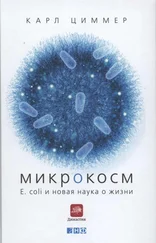
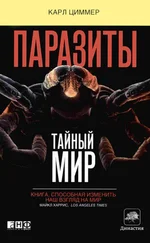

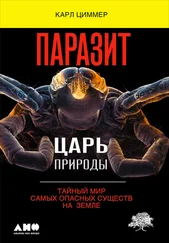
![Карл Циммер - Паразит – царь природы [Тайный мир самых опасных существ на Земле] [litres]](/books/396828/karl-cimmer-parazit-car-prirody-tajnyj-mir-sam-thumb.webp)
![Шалини Боланд - Тайная мать [litres]](/books/414707/shalini-boland-tajnaya-mat-litres-thumb.webp)
![Александр Донских - Отец и мать [litres]](/books/415697/aleksandr-donskih-otec-i-mat-litres-thumb.webp)
![Евгений Гаглоев - Верховная Мать Змей [litres]](/books/429235/evgenij-gagloev-verhovnaya-mat-zmej-litres-thumb.webp)
